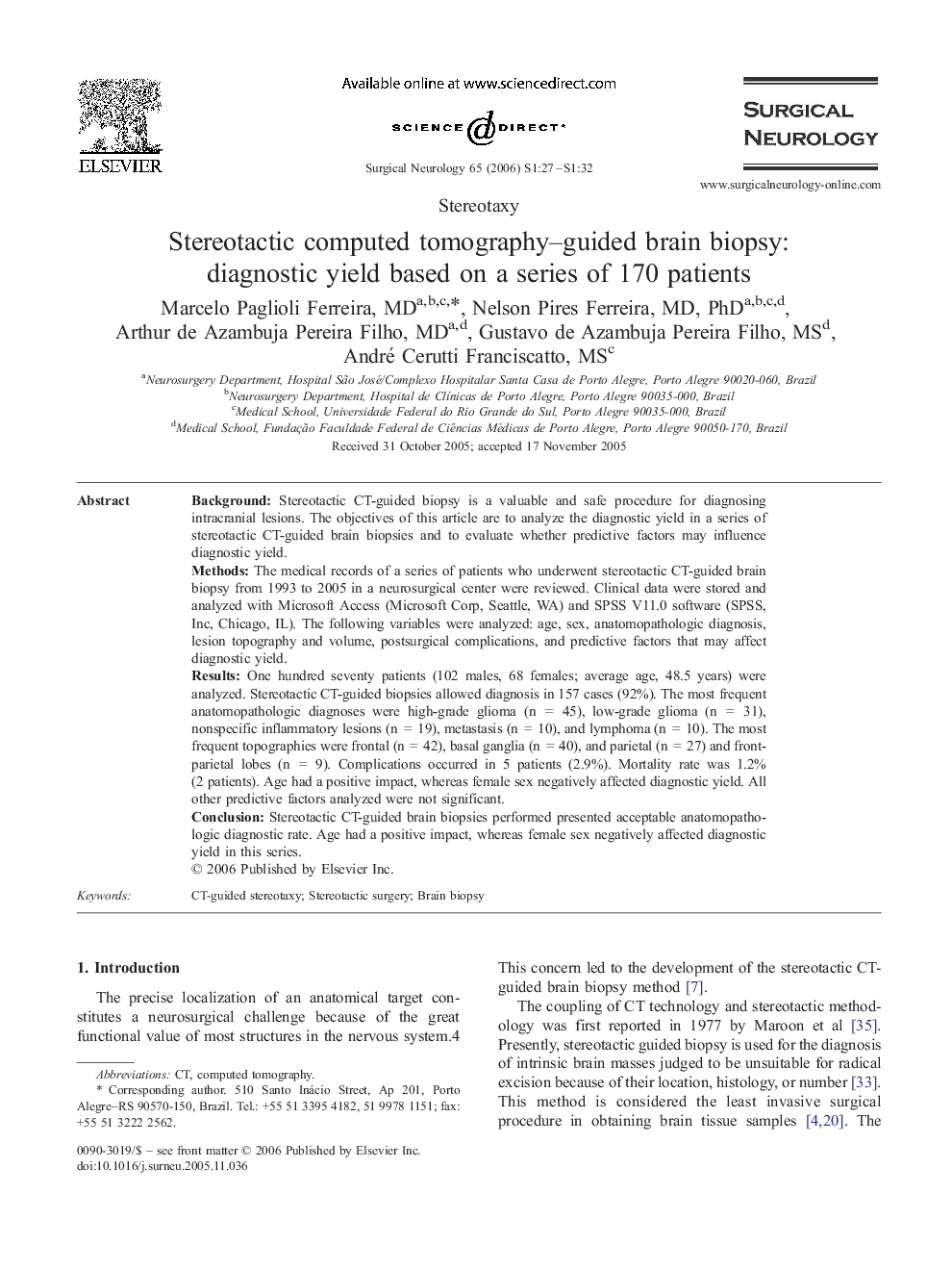| Article ID | Journal | Published Year | Pages | File Type |
|---|---|---|---|---|
| 3094393 | Surgical Neurology | 2006 | 6 Pages |
BackgroundStereotactic CT-guided biopsy is a valuable and safe procedure for diagnosing intracranial lesions. The objectives of this article are to analyze the diagnostic yield in a series of stereotactic CT-guided brain biopsies and to evaluate whether predictive factors may influence diagnostic yield.MethodsThe medical records of a series of patients who underwent stereotactic CT-guided brain biopsy from 1993 to 2005 in a neurosurgical center were reviewed. Clinical data were stored and analyzed with Microsoft Access (Microsoft Corp, Seattle, WA) and SPSS V11.0 software (SPSS, Inc, Chicago, IL). The following variables were analyzed: age, sex, anatomopathologic diagnosis, lesion topography and volume, postsurgical complications, and predictive factors that may affect diagnostic yield.ResultsOne hundred seventy patients (102 males, 68 females; average age, 48.5 years) were analyzed. Stereotactic CT-guided biopsies allowed diagnosis in 157 cases (92%). The most frequent anatomopathologic diagnoses were high-grade glioma (n = 45), low-grade glioma (n = 31), nonspecific inflammatory lesions (n = 19), metastasis (n = 10), and lymphoma (n = 10). The most frequent topographies were frontal (n = 42), basal ganglia (n = 40), and parietal (n = 27) and front-parietal lobes (n = 9). Complications occurred in 5 patients (2.9%). Mortality rate was 1.2% (2 patients). Age had a positive impact, whereas female sex negatively affected diagnostic yield. All other predictive factors analyzed were not significant.ConclusionStereotactic CT-guided brain biopsies performed presented acceptable anatomopathologic diagnostic rate. Age had a positive impact, whereas female sex negatively affected diagnostic yield in this series.
